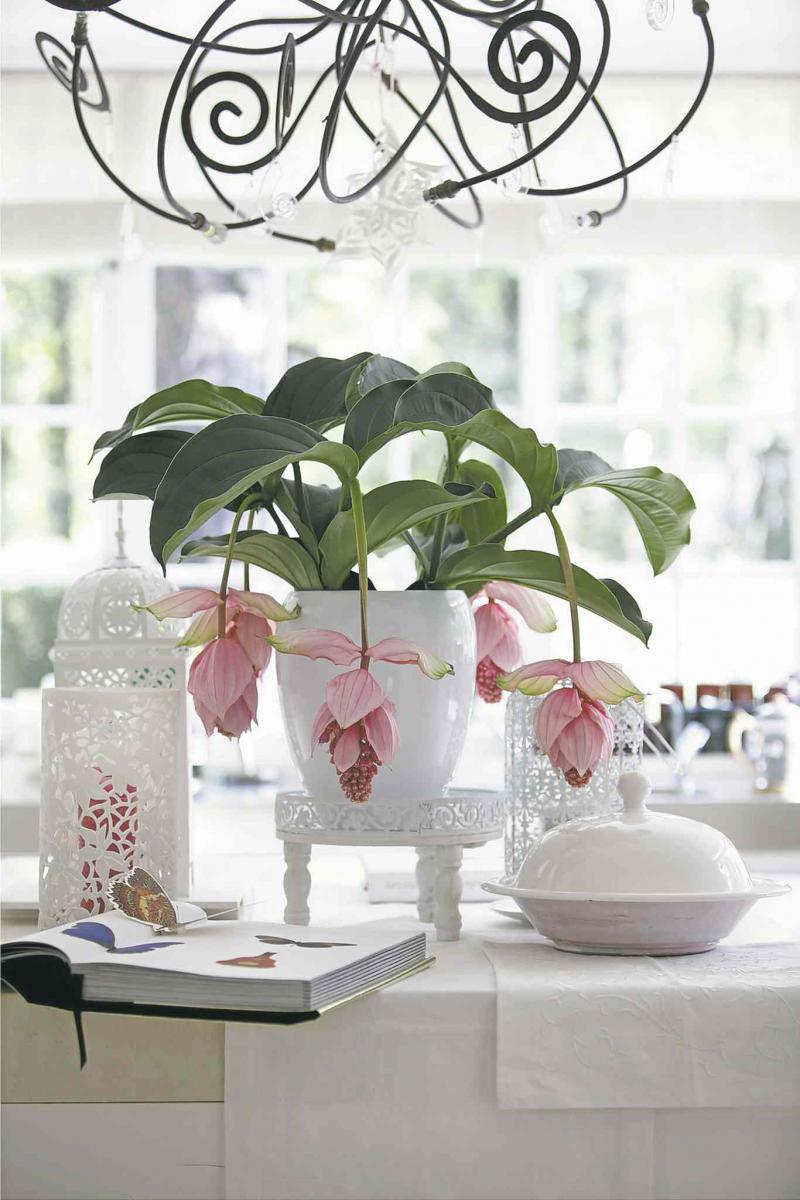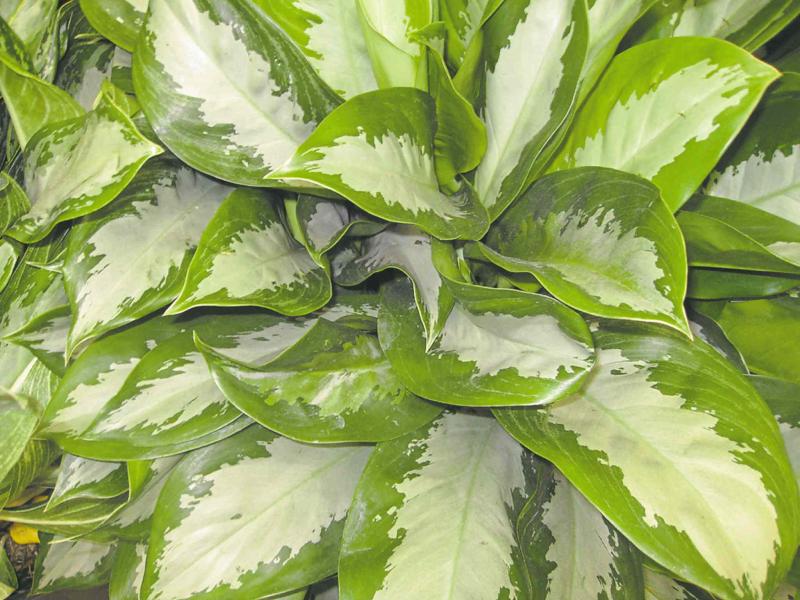

Biophilia, a concept introduced in the 1980s by Edward O. Wilson, describes a human's natural instinct to interact with nature and other forms of life. Elliott Bennett knows firsthand the value of biophilic design. The vice president of Air Strength Canada, a Winnipeg-based company, Bennett has grown up in a family business that connects workplace environments to nature through interior landscaping with tropical plants.
Plants are living organisms, says Bennett, and their integration into our home and work environment, in addition to removing air pollutants, has been proven to evoke positive, emotional and psychological benefits.
As a judge for American Hort's International Plantscape Awards, Bennett has the opportunity to see some of the most imaginative ways to display plants indoors, from dramatic living walls and innovative wallflowers for cool, contemporary surroundings to exciting plant pairings. Plants must be in optimum condition if they are to enhance their surroundings.
Plants thrive in a stable environment, yet perfect indoor environments rarely exist, especially in our climate, says Bennett. Environmental factors such as indoor temperature, humidity and light intensity are important considerations when considering the placement of plants. Close proximity to drafts of icy cold air from opening and closing exterior doors or to heating vents or fireplaces can stress plants.
There is great diversity to choose from when selecting houseplants that are both tough and easy to grow. Aglaonema grows in low, medium or bright light. Bennett says his company makes frequent use of the many varieties of aglaonema because of their versatility and adaptability. Perfect for tabletops, Red aglaonema has dark green leaves with striking red or pink tones while Silverado aglaonema (also known as Chinese evergreen) has luminous, silvery leaves. One of the easiest, low-maintenance plants to grow, aglaonema has a bushy habit and is long-living.
Sansevieria is another plant suited to low light conditions. Sansevieria trifasciata laurentii (also known as mother-in-law's tongue) is distinguished by solid lines of bright yellow on both sides of the upright leaves. Sansevieria trifasciata (snakeskin plant) lacks the yellow markings and is even more tolerant of low light conditions.
Bennett also recommends Dracaena carmen art. A forgiving plant that grows to about two metres, it is tolerant of low light and requires little maintenance. Another variety, Dracaena Janet Craig, maintains its striking dark green foliage throughout the winter, but is more suited to medium-light conditions.
For bright-light conditions, variegated shell ginger is an attractive houseplant with creamy, slightly arching, lance-shaped waxy leaves with striped green markings. Bright-light conditions are also essential for colourful foliage plants such as stromanthe and croton. Indoors in low-light conditions, the variegation and brilliant colour of these plants lessen and fade.
One of the most beautiful and exotic house plants is Medinilla. Like the orchid plant, Medinilla is an epiphyte, growing on the branches of trees in its native habitat in the Philippines. This luxuriant plant is now in greenhouse production at Northend Gardens in Jordan Ont., and is popping up sporadically at local greenhouses. Expect to pay more than you would for most other houseplants.
Decadent pink, pendulous blooms are up to 45 centimetres in length and last for up to three months or more. Large paddle-shaped leaves are dark green. While there are numerous species growing in the wild, the two varieties most commonly available are magnifica and dolce vita. Blooms last approximately two to five months depending on room temperature. Maturity of blooms is accelerated in warmer temperatures. Mist occasionally, as needed, if humidity levels are low.
It is important to avoid placing Medinilla in direct sunlight. Overwatering can spell death. Water only once every seven days allowing water to drain away, misting occasionally to add humidity.
Carla Hrycyna, co-owner of St. Mary's Nursery, says that Zamioculcas zamifolia or the ZZ plant (pronounced Zee-Zee) is very tolerant of low light and low humidity. It has an upright habit, waxy green leaves and grows about one metre tall. It has an amazing ability to conserve moisture but don't take advantage of this by forgetting to water or it will drop its leaves.
Hrycyna suggests creating vignettes with plants and staggering their heights. For example, a tall floor plant such as Ficus lyrata (fiddle-leaf fig) or a Boston fern in a plant stand might form the backdrop to a chair or sofa that is accented by a side table that holds a succulent dish garden and perhaps an orchid. The sculptural shapes of plants and the decorative vessels that hold them are all design elements that contribute to the ambience and individuality of your indoor space.
There are many weird and wonderful plants at Buller Greenhouse at the University of Manitoba. When Dr. Carla Zelmer, Department of Biological Sciences, first took on the job of managing the greenhouse, much of her time was spent renovating, indeed resuscitating, nearly half-dead indoor plants, some of which had been damaged in a fire in the Duff Roblin Building. The results are remarkable.
In one example, the usually stiff, upright leaves of the near-indestructible Sansevieria had collapsed to the floor. A Dieffenbachia wasn't much better off. Zelmer, with the assistance of student volunteers, repotted both then staked and wrapped the plant leaves in an upright position while they rehydrated. Today they are in glowing health.
Zelmer takes issue with the blanket recommendation that indoor plants don't need to be fertilized until spring. Nutrients in soilless potting media are not always adequate or can be leached out during the watering process. When plants are actively growing during the wintertime, they may become quite deficient in nutrients.
By the time you notice signs of a nutrient deficiency such as unnaturally small leaves, pale colour or dark veins, the plant is already significantly deficient, says Zelmer whose fertilizer of choice is a slow-release granular fertilizer that contains micronutrients. In the case of yellowing or death of leaves, plants may be deficient in nitrogen or iron. Application of a chelated iron product will return leaves to a healthy green. If all the leaves are yellow and the plant's growth is affected, the problem may be improper watering resulting in excessive soil moisture and root rot.
Proper watering ensures the plant's root system is not damaged. Zelmer recommends watering a plant thoroughly until a small amount of water comes out of the drainage hole.
Give your plant time to get oxygen back into its soil environment so that the roots can breathe. Don't water until you can put your finger into the soil down to the first joint and not feel moisture. Empty out any water that collects in the tray beneath the pot. This helps to prevent a build up of salts. If a crust of dissolved salts develops on the soil surface, leaching (rinsing) will help to flush out the salts.
Plants that haven't been repotted for several years often have a build up of salts. If it's possible to remove the plant from the pot, remove a proportionate amount of root mass and soil then repot in the same size pot with the addition of fresh, sterile potting medium, ensuring first that the drainage hole is not blocked.
If a plant is too large and unwieldy to repot, remove some of the soil, replace it with fresh soil and fertilize. This can do wonders for improving the health of your plant, says Zelmer.
Check your plants periodically for pests. It isn't realistic to expect that pests are never going to bother your plants. If you are noticing stickiness on some of the leaves or on the floor beneath the plant, the culprit could be aphids, mealybug or scale insect, all of which secrete honeydew. Often the honeydew drops onto the leaf below where black sooty mould develops.
Zelmer says the course of action you choose can depend on how much you like the plant and the lengths to which you are prepared to go. One method is to remove affected leaves to the main stalk where mealy bugs or scale aren't likely to be. A small amount of rubbing alcohol on a Q-tip is effective at removing mealybugs. Plants can also be sprayed with a homemade solution that combines five millilitres of mild dish detergent in three litres of water.
In the case of a severe infestation, concentrated insecticidal soap can be applied to the soil.
colleenizacharias@gmail.com



